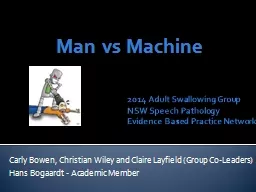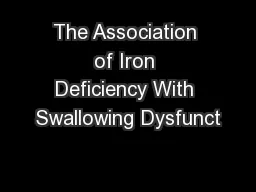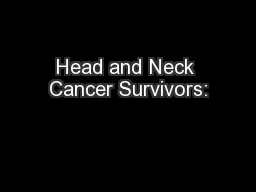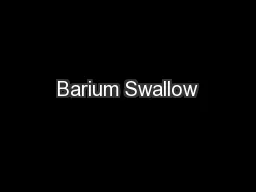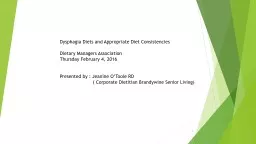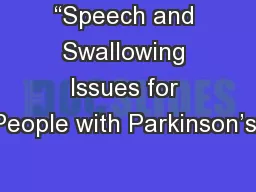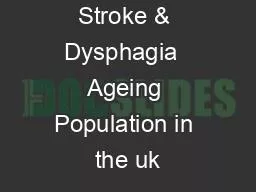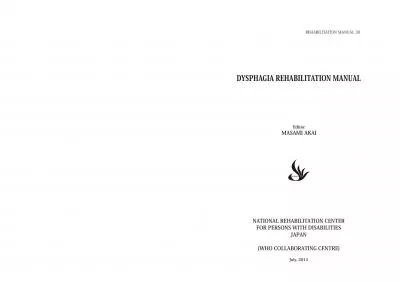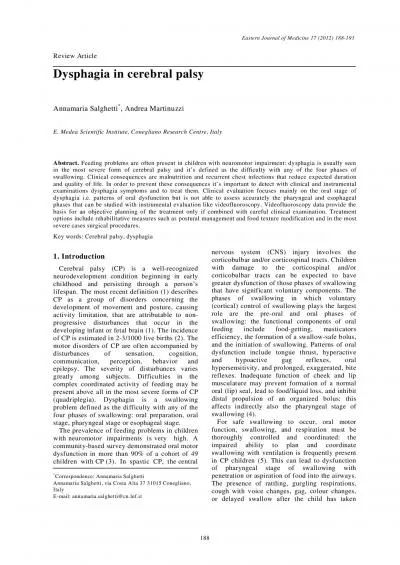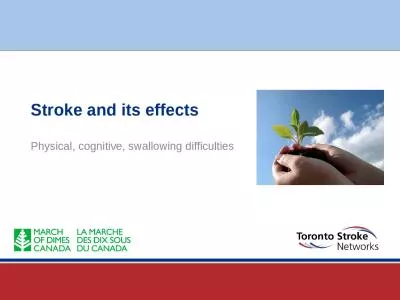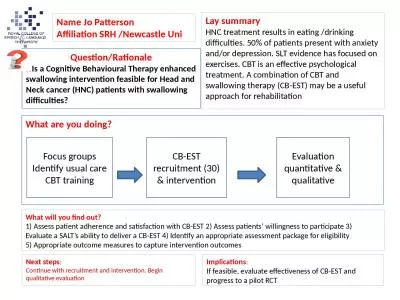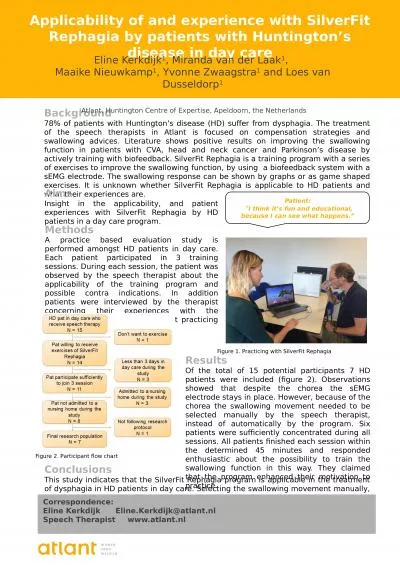PPT-2014 Adult Swallowing Group
Author : mitsue-stanley | Published Date : 2018-09-24
NSW Speech Pathology Evidence Based Practice Network Carly Bowen Christian Wiley and Claire Layfield Group CoLeaders Hans Bogaardt Academic Member Man vs Machine
Presentation Embed Code
Download Presentation
Download Presentation The PPT/PDF document "2014 Adult Swallowing Group" is the property of its rightful owner. Permission is granted to download and print the materials on this website for personal, non-commercial use only, and to display it on your personal computer provided you do not modify the materials and that you retain all copyright notices contained in the materials. By downloading content from our website, you accept the terms of this agreement.
2014 Adult Swallowing Group: Transcript
Download Rules Of Document
"2014 Adult Swallowing Group"The content belongs to its owner. You may download and print it for personal use, without modification, and keep all copyright notices. By downloading, you agree to these terms.
Related Documents

